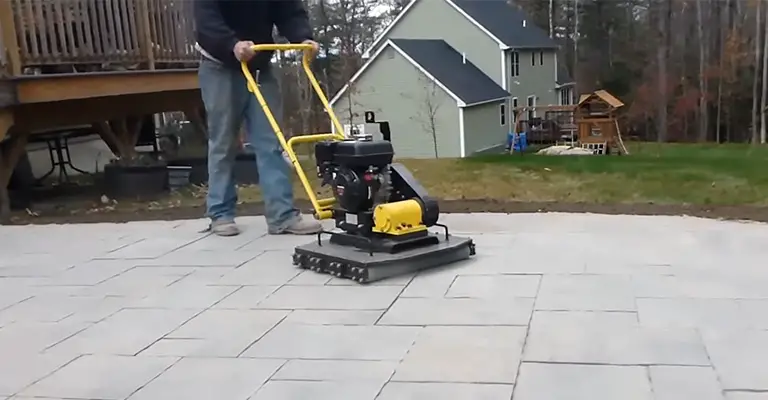Creating a beautiful patio or walkway with interlocking pavers can transform any outdoor space into an inviting oasis.
However, achieving a flawlessly compacted paver surface often requires heavy machinery, such as a plate compactor.
While plate compactors are highly effective, not everyone can access this equipment or may prefer alternative methods due to budget constraints, limited space, or noise concerns.
If you don’t have access to a plate compactor, compacting pavers can still be achieved using a steel handle tamper. This straightforward method offers a simple alternative.
The good news is that you don’t necessarily need a plate compactor to achieve excellent paver compaction.
From using a hand tamper to employing water for compaction, we’ll explore techniques that have proven successful for many DIY enthusiasts and professionals.
What Can I Use Instead Of A Plate Compactor For Pavers?
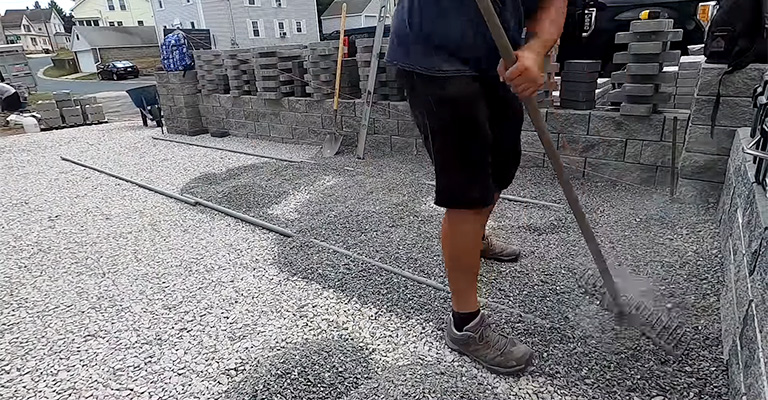
During tile installation, many steps need to be followed. We are here to help you with every aspect of your project, from planning the layout to choosing pavers, bedding, and sealing.
Without proper attention, many details can slip through the cracks. The guide provides the methods and knowledge you need to create a stable and visually appealing paved surface, whether you are:
- A DIY enthusiast.
- A homeowner looking to save money.
- Simply looking for a quieter option.
Throughout this class, we’ll explore many innovative methods that carry out work with basic tools, a little manual labor, and a lot of persistence.
1. Use A Steel Handle Tamper
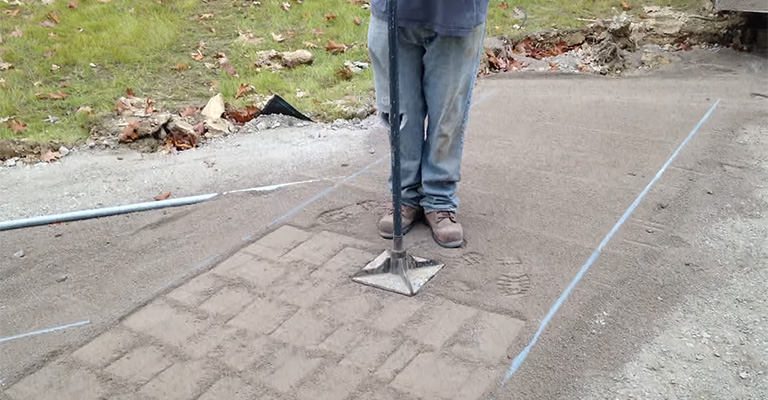
If you were wondering if it was possible to compact pavers without a giant plate compactor, there is a steel handle tamper. Using this method will allow you to compact your pavers easily.
Using a hand tamper involves less force and impact. Therefore, the chances of cracking pavers are decreased when using a steel handle tamper. Many hardware stores sell steel handle tampers.
2. Use A Rubber Mallet
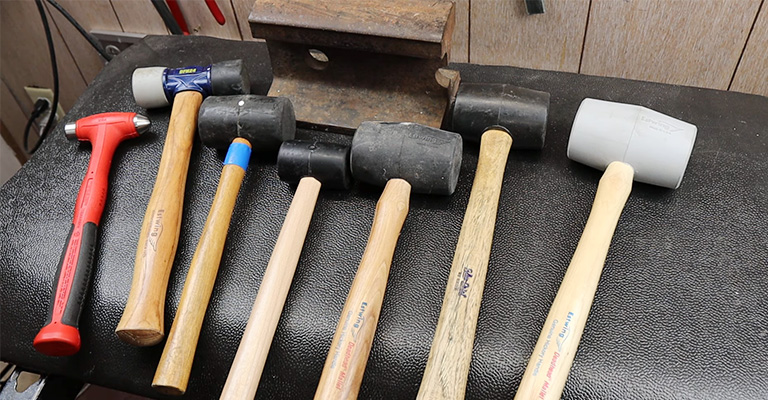
Using a rubber mallet to compact the pavers themselves without a plate compactor is best.
During this step, you will not need a hand tamper. Too rough and too strong, it needs to be a paver rather than a rough surface. Some pavers, especially those with a glossy finish or those made of soft stone, may even be damaged by this.
After placing the pavers in the sand, you should use a hammer mallet to lightly tap and secure them. Once you have laid a tile, you should not move it. Pick it up if you made a mistake and reinstall it.
You can tap the rubber mallet once you’re sure it’s in the right place. Be mindful of your strength as you do it. The amount of sand you use should be enough to settle the paver in position without sinking it into the sand.
Steps For Compacting Pavers Without a Plate Compactor
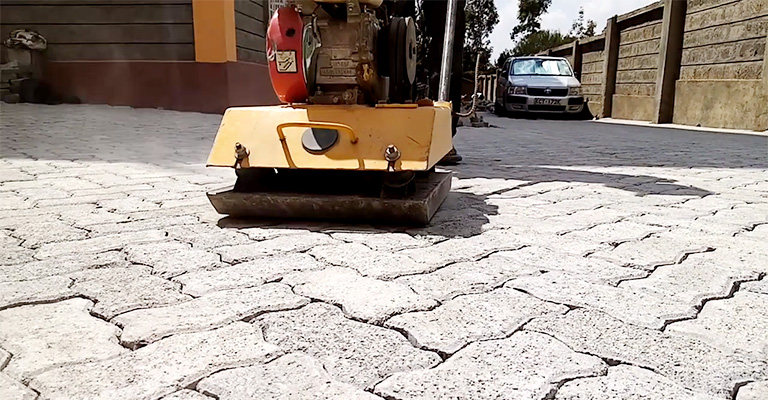
If you follow a few simple steps, your compaction process will proceed smoothly.
Step 1: Prepare the Hole
When installing pavers, you always have to dig a hole first, so make sure you pay attention to that step. Ensure that the ground you will be digging in is perfectly level and that there are no puddles of water.
There needs to be a slope leading away from the main building in the area, but the hole should be as level as possible. This is done to prevent future problems related to installation and improve drainage in the area.
As part of this first step, you don’t need to compact the soil. The ground will naturally settle and compact because we will cover the entire hole with geotextile fabric anyway.
Step 2: Bedding
It’s here that things get serious when it comes to compacting. As such, we would say it’s of utmost importance here, even crucial.
Compacting the soil in the initial step of bedding is vital to ensuring your installation has a solid foundation.
When using gravel as a base, it is recommended that it be spread in thin layers to facilitate better compacting.
Usually, a gravel bed for pavers is between 4 and 6 inches deep. For best results, spread it one inch at a time and compact the area twice before adding the next layer.
A hand tamper will work just as well to compact pavers without a plate compactor. In addition to getting more than one, if you can bring in some help, the process will go faster as well.
Step 3: Apply Soil Stabilizer
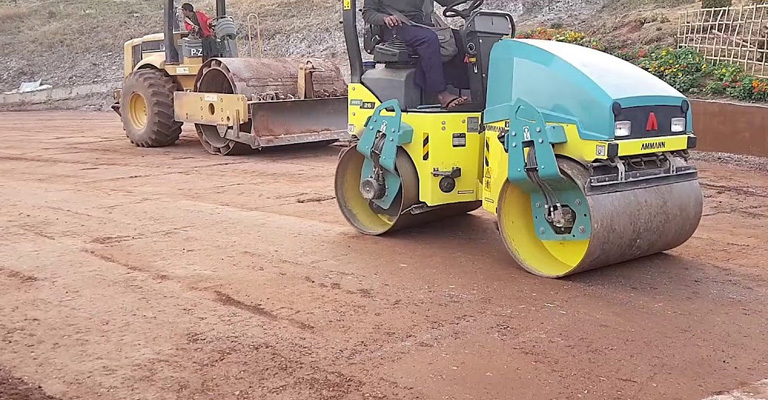
Without the powerful tool, ensuring that the pavers are levelled and compacted properly will be impossible. Soil stabilizers will ensure that the pavers are balanced evenly by adding stability and strength to them.
In soil stabilizers, pulverized materials are combined with additives to provide stability. Let it sit for a couple of hours until the surface becomes consistently stable.
Step 4: Sand Base
Compressing the sand base is not necessary. This isn’t even something you should think about. 2×4 and two 1-inch pipes should be used to level the sand used as a foundation.
The goal is to use the 1-inch pipes as rails between which you slide your 2×4. Screed the sand around the pipes after it has been poured and carefully removed.
If you are going to do that, we recommend using small sections and being careful not to step on your previous work. There is no way to compact the sand base. The sand is poured and levelled, and then nothing more needs to be done.
Things You Need to Know About Compacting Paver
Not all pavers can be compacted, so you must first understand this. You may damage your pavers if the process causes damage.
As a matter of fact, you don’t even have to compact the pavers themselves if you have installed them properly.
As such, focusing on the installation is your best course of action. Ensure that the soil is compacted correctly along all the steps to ensure the pavers are levelled and compacted properly.
It is easier to compact the soil in these steps with a hand tamper, which is a cheaper and easier-to-manage tool.
Why Compact Pavers At Home?
You would think that laying patio pavers would ensure their security. Yes, almost! Nevertheless, you must compact your pavers once they are laid for two main reasons.
Consistency
In contrast to sinking on their own, paving stones are compacted to avoid uneven settlement.
As well as levelling each stone, it also ensures that each paver fits snugly against one other. Having flat surfaces in your hardscape will prevent uneven surfaces and trip hazards.
Even Settling
Secondly, compacting pavers will ensure that each stone settles evenly. You should expect 11 to 14 inches of settlement during compacting, so you should control this yourself rather than just let it happen.
If you deliberately control the “sink”, that would be great. That means that the pavers will not settle unevenly over time as a result of their gravity.
Interlock
As pavers are compacted, sand is forced (or wiggled) deep into the joints from their bedding layer. With this process, your patio pavers are permanently anchored to the bedding underneath, ensuring your hardscape is structurally sound.
Can I Use a Hand Tamper for Polymeric Sand?
In the use of polymeric sand, the Interlocking Concrete Pavement Institute (ICPI) recommends compacting the pavers. It might be necessary to use a hand tamp like the one above if you’re working within a limited area.
You should consider using a plate compactor when the patio or driveway is large. Any polymeric material left on the bricks after the hardscape had been watered down will adhere to them.
Can You Compact Gravel With A Hand Tamper?
The most commonly used tamper instrument is the manual hitting tamper. Aside from being simple, it’s also the best tool to use when tampering.
With the hand tamper, you can compress the surface as you exercise the lower back and shoulders. A flat, long steelhead is attached to a long, upright handle.
By using hand tampers, the surface can be flattened and compacted. Topsoil, asphalt, and sand, as well as smoothing and smoothing dirt, can be tamped, fixed, and levelled using this tool.
In addition to using a tamper, pavers can also be compacted manually. When laying pavers, it is common practice to compress the soil in the yard or outdoors using hand tampers before laying the pavers.
Can you Use a Lawn Roller to Compact Pavers?
You can compress material using lawn rollers, hand tampers, and sledgehammers. It’s essential to keep both roller speed and pressure constant when using a roller.
Tamping/rolling should be done in an effective manner if one wants to disperse the necessary compaction throughout the whole area. Layers help you ensure that every region is tightly packed when you’ve got a lot of depth.
Professional Help to Install and Compact Pavers
It is sometimes too much to handle and invest in a plate compactor for simple DIY paver installations. Compacting pavers without a plate compactor is possible by simply tamping them down with a hand tamper and rubber mallet.
There may be situations, however, when a hand tamper and rubber mallet combination can’t handle a large installation. When this happens, a plate compactor is an optimal solution.
Whenever you don’t want to deal with one, hiring a qualified hardscape professional in your area might be the best option for you.
Final Words
Having dreamed about building your own pavers but worried that it could become a disaster without the necessary power tools? By following these steps, you can achieve your desired pavers, no matter your budget.
Even though it may take longer than you expect, having it done by yourself and achieving your dream pavers will take care of all your worries.

